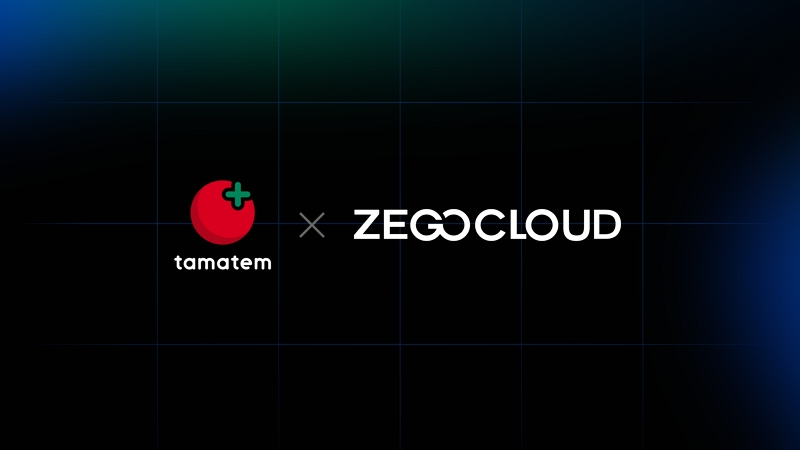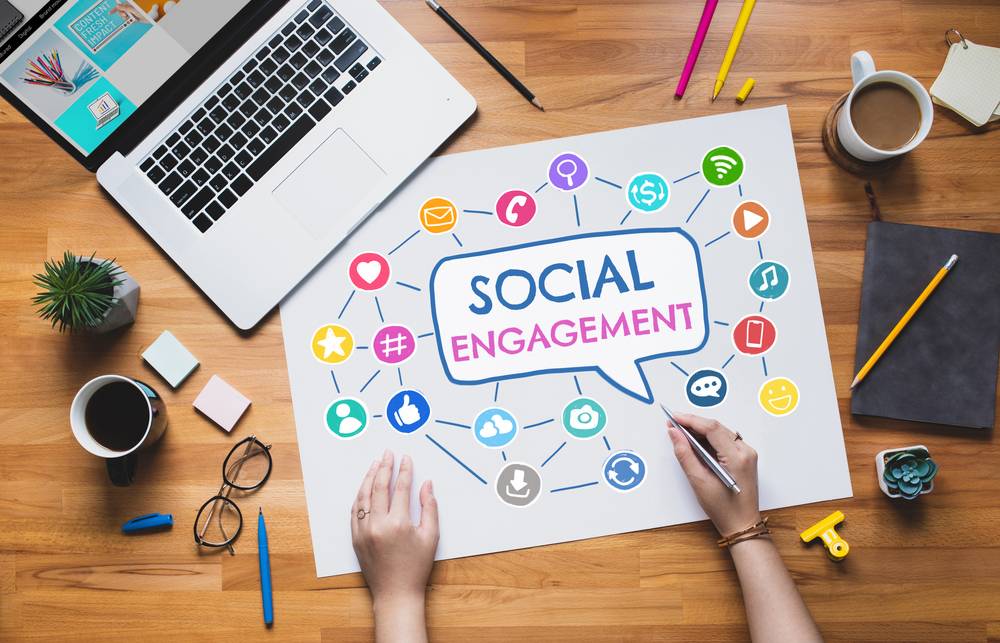With an ever-present sense of belonging, humans always crave social engagement for their psychological well-being. They always try to connect with others in their communities to reduce their feelings of loneliness. Nowadays, it is easier than ever for people to connect socially due to technological advancements. Go through this article to learn about the importance and strategies of social engagement to get socially engaged.
Understanding Social Engagement
Social engagement refers to the level of participation an individual has within their online and offline communities. Man is a social animal, so he always tries to connect with others. Moreover, every human wants to create positive relationships with their loved ones to have a sense of belonging. For this purpose, we can use social platforms or offline gatherings to connect with the public.
After learning about social engagement definitions, let’s understand the need for these interactions. All these social connections provide opportunities to build support networks in need. In addition, these social engagement systems offer emotional and practical help in dealing with the problems a person faces.
Other than that, it is crucial for developing and maintaining thriving communities. By developing social communities, you can create a society with shared goals and collective problem-solving. Furthermore, people who get socially engaged with others also grow personally due to the boost in their communication skills. Social media is a primary source of engagement nowadays, with over 5 billion users on these platforms.
What are Social Media Engagement Metrics?
Tracking social media engagement metrics is essential for understanding how users interact with your content and optimizing your strategy. Below are key metrics to monitor:
- Likes and Reactions: These show how many users appreciate or engage with your posts. Higher likes or reactions indicate appealing content.
- Comments: Comments reflect deeper engagement, as users take the time to express opinions, ask questions, or start conversations.
- Shares: Shares indicate that users find your content valuable enough to pass along to their own network, expanding your reach organically.
- Clicks: This metric measures the number of users who clicked on a link or call-to-action (CTA) in your post, showing interest in further engagement.
- Mentions: When users mention your brand or content in their posts, it signals increased brand awareness and visibility.
- Follower Growth: Tracking the increase in your followers over time helps gauge the overall appeal of your brand and the effectiveness of your content strategy.
- Engagement Rate: This is calculated by dividing total engagements (likes, comments, shares) by your total number of followers or impressions. It offers insight into how well your content resonates with your audience.
- Conversion Rate: This metric shows how many users completed a desired action, such as signing up for a newsletter or making a purchase, after engaging with your social media content.
Importance of Social Engagement
Now, you know what is social engagement after going through the above section. Therefore, let’s look further at the importance of these social interactions to understand the concept in depth.
- Mental and Emotional Well-being: The people who interact with others regularly get emotional support from others. Overall, it will be vital in reducing loneliness in the combined society. All of this will help remove stress, anxiety, and depression problems from within society.
- Physical Health: Studies have demonstrated that people with better communication skills have better physical health outcomes. Additionally, socially engaged individuals will make healthy lifestyle choices, such as exercise and sports.
- Sense of Purpose: Individuals in a community or social group get a sense of purpose in their lives. These people work towards the greater good of society without any selfish thoughts. Ultimately, it will result in a community with a shared goal and complete empathy.
- Better Quality of Life: When you care more about social engagement than individual benefits, it leads to a better quality of life. Also, research suggests that socially active people tend to experience greater life satisfaction and fulfillment.
Challenges of Social Engagement
The challenges of social engagement can vary depending on the context. You can face different challenges based on the type of interaction, including online, in-person interactions, or even on a community level. The following points will give you an idea of the challenges you might face while trying to engage with society.
- Time and Resource Constraints: You will have to spend time and resources if you want to engage with others. Every interaction, including meetings, online discussions, and simple 1-on-1 interactions, requires you to give suitable time.
- Social Anxiety: Many people struggle with social anxiety when they try to socially engage with others in their community. Other challenges may include fear of judgment and rejection, which stop individuals from participating in social activities.
- Cultural Differences: Individuals face challenges while communicating with people from other cultures and languages. In addition, factors such as language barriers and cultural norms heavily affect social engagement systems.
- Technology Dependence: Most of the communication done nowadays is through social platforms. That’s why this excessive reliance on online social channels weakens face-to-face interactions.
Factors Influencing Social Engagement
Several factors can impact the level of engagement your social media content receives. Understanding these elements will help you craft more engaging and interactive posts.
- Content Relevance: Content that resonates with your target audience’s interests, needs, or values is more likely to generate engagement. Tailoring your posts to address specific pain points or trending topics increases the chances of likes, comments, and shares.
- Post Timing: The time you post can significantly affect engagement rates. Posting when your audience is most active, typically during peak hours, ensures your content is seen and interacted with. Analyzing your audience’s behavior can help determine the best posting times.
- Visual Appeal: Posts with high-quality visuals, including images, videos, and infographics, tend to attract more attention. Eye-catching designs encourage users to stop scrolling and engage with the content.
- Content Format: Different content formats yield different engagement results. Interactive formats like polls, quizzes, and live videos tend to generate more engagement than static images or text posts. Variety in content types keeps your audience interested.
- Calls to Action (CTAs): Encouraging your audience to take action—such as commenting, sharing, or clicking a link—can significantly boost engagement. Well-placed, clear CTAs prompt users to interact with your content in meaningful ways.
- Frequency and Consistency: Regular posting helps keep your audience engaged, while long periods of inactivity may result in decreased visibility. Consistency builds audience trust and expectation, leading to sustained engagement over time.
- User-Generated Content (UGC): Encouraging users to share their own content related to your brand creates a sense of community and involvement. UGC often fosters higher engagement because people are more likely to interact with content created by their peers.
- Social Proof: The number of likes, shares, and comments on a post can influence others to engage. Content with high engagement acts as social proof, encouraging more users to participate and further boosting visibility.
Top 5 Social Engagement Strategies in 2024
As discussed, social interactions are crucial in developing a healthy and prosperous society. However, you need to follow some basic strategies to engage with people better. Upon realizing what is social engagement, let’s read about the best way to develop interactive relationships.
1. Post Content on Social Platforms
Content creators wanting to socially engage with their audience need to put engaging content online regularly. By doing so, they will be able to stir up conversations among their followers and interact with them on relevant issues. Moreover, you need to follow the latest trends while publishing content online so that you can reach a wider audience for more social engagement.
Similarly, marketers use this strategy to reach the target audience for more interactions, resulting in better sales. According to the latest statistics, about 50% of marketers are looking to boost investment in content-related marketing.

2. Boost Your Social Engagement through ZEGOCLOUD APIs
Online communication plays a significant role in connecting people for easier engagement opportunities. For this purpose, you can integrate APIs and SDKs offered by ZEGOCLOUD to boost your social interaction. It provides you with voice and video calling APIs to better connect with your loved ones in 1-on-1 conversations. While doing so, you can also record the interactions to cherish these memories in the future.
In addition to that, ZEGOCLOUD APIs allow you to add live streaming capability to your social engagement system. With this feature, you will be able to interact with a larger community in one go. Some of the other ZEGOCLOUD SDKs will be discussed in the later section to help you understand the functionality of these social tools.

3. Utilize Polls, Surveys, and Questions
You can easily boost engagement with the community by gathering feedback and insights from them. Polls and surveys are the best methods to collect community feedback for better social engagement. In addition, you can decide to collect information about people through online or offline mediums. However, the online method is more accessible and affordable, allowing you to connect with a diverse range of people worldwide.
Furthermore, people can choose to hold Q&A sessions on social platforms to connect with a large group of people directly. All of this will allow you to know what others think about you, which will prove valuable in improving your communication skills.
4. Host Contests and Giveaways on the Community Level
After you genuinely understand social engagement’s meanings, you will know it is more about the greater good than personal benefits. So, you should arrange contests and giveaways to engage your audience better. It will also compel the public to listen to what you have to say to them.
Moreover, you can also arrange in-person competitions to connect with your online audience physically. When arranging such competitions, you can ask participants to share the event details with their friends. By doing so, you will be able to build a healthier community online and offline.

5. Collaborate With Online Influencers
Creators looking to boost their social engagement can opt to partner with influencers and industry experts. To do so, you have to identify individuals whose audience aligns with your target demographic. Additionally, when they endorse your page or product, it will help you reach a much wider community for a better interactive potential.
All these strategies will prove beneficial for you only if you also listen to what your audience has to say. One-way communication will never boost the social engagement system for better interactivity.
The Role of ZEGOCLOUD in Enhancing Social Engagement
After understanding the major strategies to boost social engagement, let’s further analyze the best way to boost these interactions. In this fast-paced world, people prefer social interaction that has less waiting time and improved engagement opportunities. ZEGOCLOUD provides users with advanced APIs to improve the “Time to First Frame (TTFS)” metrics. So, after interacting through these social APIs, users have better satisfaction levels and more monetization opportunities.

Let’s explain this claim through our case study in which we helped Tamatem Games create an app for social interactions through gaming. Using our voice-calling API, they integrated voice chat rooms into their Wanas app. This app aimed to implement a social engagement system through private chatrooms while playing games like Ludo.
So, we helped them fulfill this purpose with our API, providing them with a crystal clear voice-calling experience. Through our APIs, they were also able to develop compatibility between real-time voice and other game sound effects for uninterrupted talking sessions. The product manager of Tamatem Games acknowledged our services in providing an interactive gaming experience to their users.
Conclusion
All in all, social engagement is necessary for the collective good of a society. Throughout this article, we have explained the importance and different strategies to boost your community interactions. However, if you want to maximize your online communications, we recommend you make use of ZEGOCLOUD APIs and SDKs. With its multi-featured voice and video APIs, you can have face-to-face interactions with a global audience.
Read more:
FAQ
Q1: How can I increase social engagement?
To increase social engagement, you can post relevant, high-quality content, use visually appealing images or videos, optimize posting times, encourage interaction with calls to action (CTAs), and maintain a consistent posting schedule.
Q2: Why is social engagement important for brands?
Social engagement is crucial for brands because it helps build stronger connections with the audience, increases visibility through organic reach, and fosters brand loyalty. Higher engagement can also lead to better conversions and business growth.
Q3: How do you measure social engagement?
Social engagement is typically measured by metrics such as likes, comments, shares, clicks, and engagement rate (total interactions divided by followers or impressions). These metrics provide insights into how well your content resonates with your audience.
Let’s Build APP Together
Start building with real-time video, voice & chat SDK for apps today!










